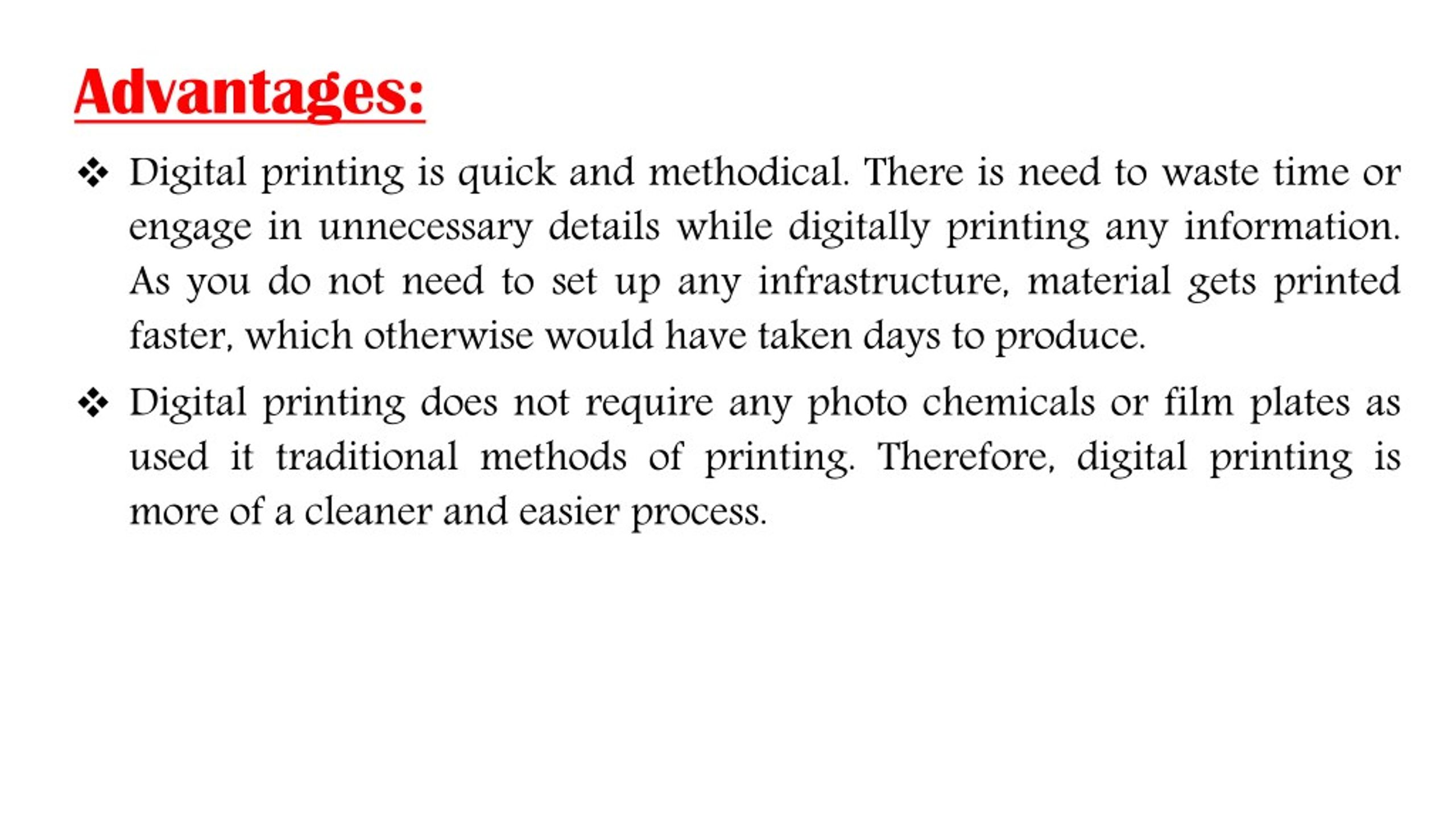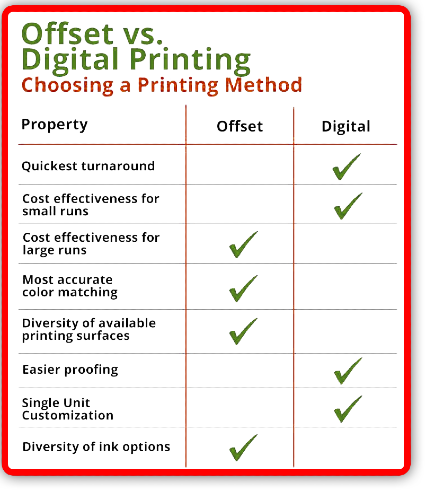The smart Trick of Digital Printing That Nobody is Discussing
The smart Trick of Digital Printing That Nobody is Discussing
Blog Article
Excitement About Digital Printing
Table of Contents7 Easy Facts About Digital Printing ExplainedDigital Printing Things To Know Before You BuyGetting My Digital Printing To WorkHow Digital Printing can Save You Time, Stress, and Money.5 Easy Facts About Digital Printing DescribedThe Definitive Guide for Digital Printing
Variable data printing, such as direct mail with individualized codes and addresses, is preferably fit for digital printing. Digital fast printing just requires four steps of style, testimonial, printing and binding to obtain everything done. Digital fast printing has an unrivaled advantage: print on need.According to PMMI, digital printing permits brands and manufacturers to respond swiftly to client needs while boosting the supply chain, lowering warehousing price and waste, and enjoying faster time to market. That all audios great, but how does this technology do all that? The major differentiator of these innovations is that there are no set up costs and no plates with electronic printing.
Getting The Digital Printing To Work
According to Wikipedia, the biggest difference in between digital printing and traditional methods such as lithography, flexography, gravure, or letterpress - Digital Printing is that there is no demand to change printing plates in electronic printing, whereas in these analog printing techniques the plates are continuously changed. This causes quicker turn-around time and reduces cost when making use of digital printing.
Digital printing is very versatile, so it's very easy to make changes to the package design quickly. It all goes back to the plates.
With traditional printing methods, short-run printing is simply not possible. Since an excellent design can make or damage your product, digital printing regularly develops top quality, clear and vivid graphics each time.
Digital printing is the process of printing digital-based pictures directly onto a selection of media substratums. There is no demand for a printing plate, unlike with balanced out printing. Digital data such as PDFs or desktop computer posting files can be sent directly to the digital printing machine to publish on paper, image paper, canvas, material, synthetics, cardstock and other substratums.
Not known Details About Digital Printing
According to PMMI, electronic printing enables brand names and suppliers to react promptly to customer needs while enhancing the supply chain, minimizing warehousing expense and waste, and taking pleasure in faster time to market. That all audios fantastic, however just how does this innovation do all that? The significant differentiator of these innovations is that there are no set up charges and no plates with electronic printing.
According to Wikipedia, the best difference between electronic printing and standard techniques such as lithography, flexography, gravure, or letterpress is that there is no demand to change printing plates in digital printing, whereas in these analog printing approaches home plates are repeatedly replaced. This leads to quicker turnaround time and lowers expense when utilizing digital printing.

Rumored Buzz on Digital Printing
A lot more supply can indicate more waste down the roadway. With traditional printing methods, short-run printing is simply not possible. Due to the fact that a terrific design can make or break your item, electronic printing regularly produces high-quality, clear and vivid graphics each time. Digital printing on flexible bags includes the bright, vivid, and specific graphics that almost bid consumers to reach out and touch them.

According to PMMI, electronic printing permits brand names and producers to react rapidly to client demands while improving the supply chain, minimizing warehousing price and waste, and enjoying faster time to market. That all sounds wonderful, yet just how does this innovation do all that? The major differentiator of these technologies is that there are no set up charges and no plates with digital printing.
10 Easy Facts About Digital Printing Shown
According to Wikipedia, the greatest distinction in between digital printing and conventional methods such as lithography, flexography, gravure, or letterpress is that there is no requirement to replace printing plates in digital printing, whereas in these analog printing techniques the plates are repeatedly changed. This results in quicker turn-around time and lowers expense when utilizing digital printing.
Speedy manufacturing suggests getting your item to market much faster. It see page likewise indicates it's less complicated and faster to make adjustments later on, when you alter a dish, add a SKU, or develop seasonal product packaging. Digital printing is highly versatile, so it's simple to make modifications to the plan style quickly. Everything goes back to the plates.

Digital Printing Fundamentals Explained
Digital printing is the procedure of printing digital-based images directly onto a selection of media substrates. There is no requirement for a printing plate, unlike with balanced out printing. Digital files Extra resources such as PDFs or desktop posting files can be sent out directly to the digital printing press to print on paper, image paper, canvas, material, synthetics, cardstock and other substratums.
Report this page